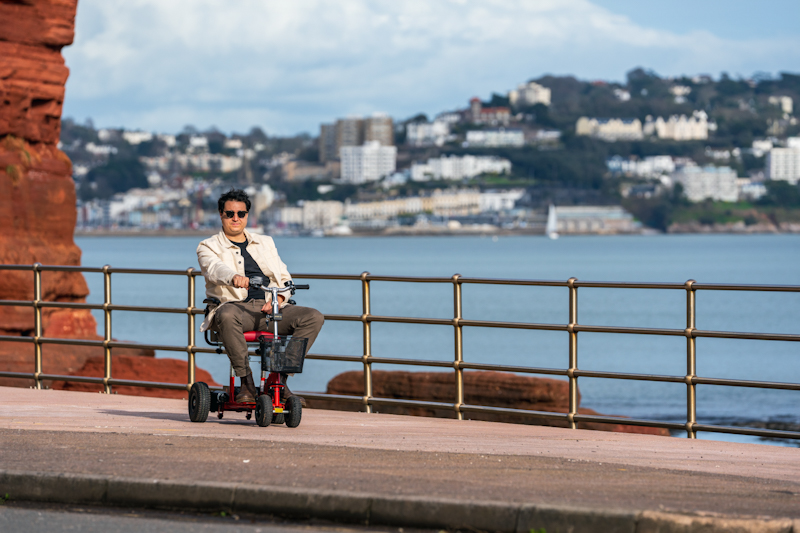 Effortless Travel with Your Lightweight Mobility Scooter on Public Transport
Effortless Travel with Your Lightweight Mobility Scooter on Public Transport
Making Travel Simple with Your Mobility Scooter
Travelling with a lightweight mobility scooter doesnt have to be complicated. Whether you're taking a train, bus, or flight, knowing what to expect can make the experience much smoother. Public transport systems have improved accessibility, and with a little preparation, you can enjoy seamless travel without unnecessary stress.
Understanding your scooters specifications, transport policies, and booking assistance where necessary can make all the difference. This guide will help you plan ahead, avoid common issues, and feel more confident about navigating public transport.
Preparing Your Mobility Scooter for Travel
Before setting off, it is crucial to check that your mobility scooter meets transport requirements. Each service provider has specific regulations regarding weight limits, battery types, and storage options.
Start by knowing the following details about your scooter: Size and weight. Some buses and trains have restrictions on larger models. Folding capability: Foldable scooters are easier to store and transport. Battery type Airlines, in particular, have strict rules on lithium-ion batteries.
Ensuring your scooter complies with these policies will help avoid last-minute disruptions.
Using Trains with a Mobility Scooter
Trains are one of the most accessible transport options for mobility scooter users, but it is still important to plan.
Most train companies provide designated spaces for scooters, but these can be limited. It is best to book assistance in advance to guarantee a spot. Arriving early at the station will also give you extra time to navigate platforms, find accessible entrances, and ensure you can board the train safely.
Once on board, park your scooter in the allocated space, apply the brakes, and follow any guidance provided by staff to ensure a safe and comfortable journey.
Travelling on Buses with a Mobility Scooter
Public buses can be a convenient way to travel short distances, but accessibility policies vary depending on the bus company. Checking local services before your trip will help you understand the specific rules for mobility scooter users.
Many modern buses have low-floor access and ramps, making it easier to board. When the bus arrives, wait for it to come to a complete stop before approaching, and do not hesitate to ask the driver for assistance if needed.
Most buses have dedicated spaces for wheelchairs and scooters. Once inside, position your scooter securely and apply the brakes to ensure stability during the journey.
Planning your route using public transport apps can also be helpful, especially if your trip involves transfers between buses or other modes of transport.
Flying with a Mobility Scooter
Air travel requires more preparation than other forms of transport due to stricter battery regulations and security procedures.
When booking your flight, inform the airline that you will be travelling with a mobility scooter. If you are travelling with a lithium battery on a flight, then particular information and documentation needs to be submitted to the airline when booking the flight. They may require details such as the scooters weight, size, and battery type. Some lightweight scooters, like those from Lightweight Scooters, have airline-approved battery options, making the process much easier.
Many airlines request that mobility scooters be checked at the gate before boarding. Arriving early at the airport will give you enough time to go through security checks and complete any necessary paperwork.
If you need assistance getting to the gate, airport staff can provide mobility support upon request. With proper preparation, flying with a scooter can be a straightforward experience.
For more information on flying with a mobility scooter, click here.
Essential Travel Tips for Hassle-Free Journeys
Regardless of how you travel, a few key practices can help ensure a stress-free experience.
Carry important documents. Keep disability identification, insurance details, and any transport confirmations handy. Pack essential items. Bring snacks, water, and any necessary medications. Charge your scooter fully. Ensure your battery is at maximum capacity before setting off. A portable charger can be helpful for longer trips. Know your rights In the UK, laws such as the Equality Act 2010 protect mobility scooter users and ensure accessibility in public transport.
Being prepared will help you enjoy a smooth, hassle-free journey, no matter where you're headed.
Final Thoughts on Travelling with a Mobility Scooter
With proper planning and a good understanding of transport policies, travelling with a lightweight mobility scooter can be simple and enjoyable. Whether you are catching a train, bus, or flight, knowing what to expect will give you confidence and peace of mind.
By checking accessibility options, booking assistance where necessary, and staying prepared, you can ensure a smooth and stress-free journey. Travel should be enjoyable, so embrace the adventure and scoot on with confidence!
Date published: 28/02/2025

What battery can I use for my lightweight mobility scooter? Which battery is best?

Taking your lightweight mobility scooter on an aeroplane. Thinking of flying?

Do we need a Highway Code for mobility scooter users? Mobility Highway Code

What does a home demonstration involve? Home Demonstrations
Read more mobility articles



